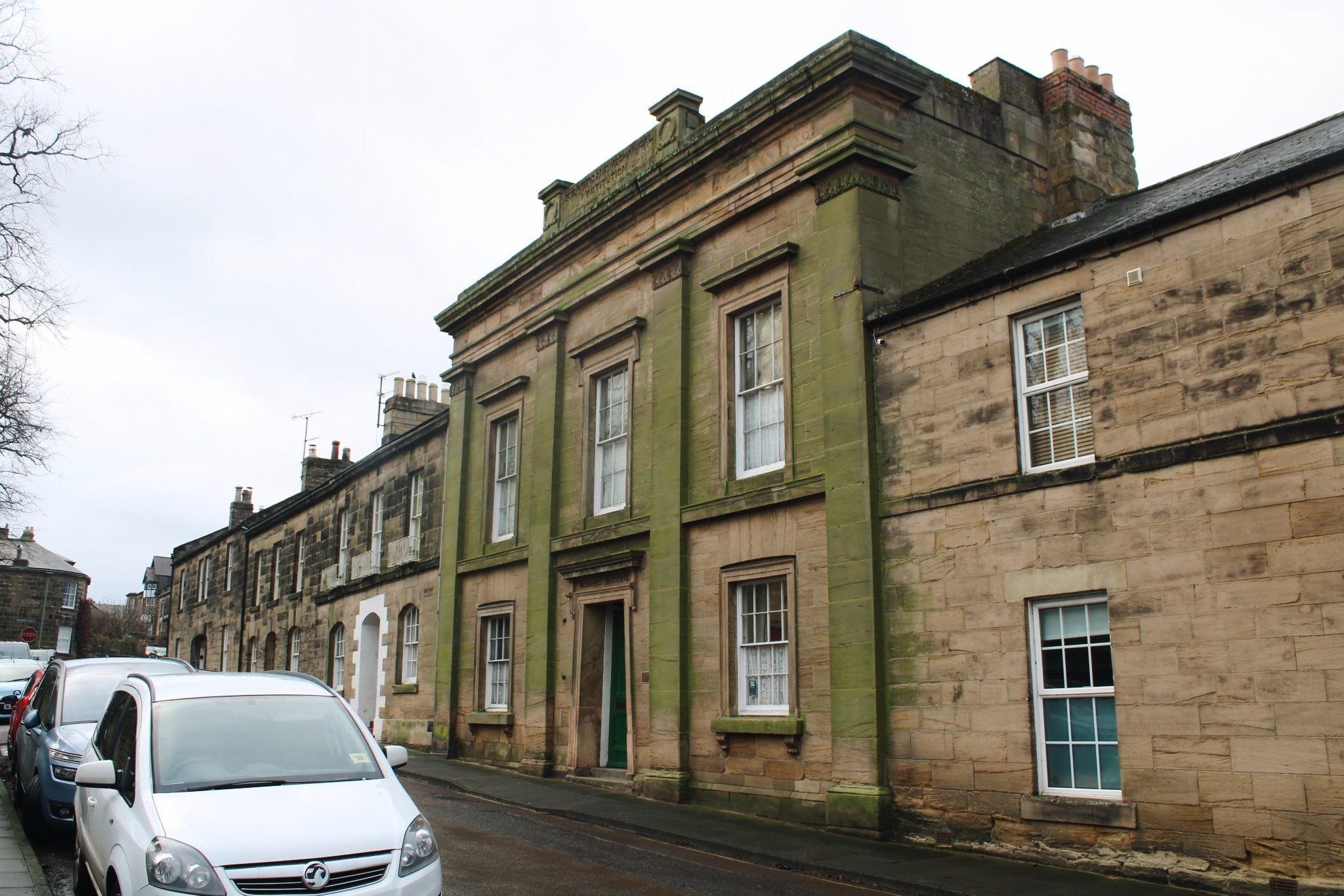
Alnwick
Alnwick Mechanics Institute
Last Updated:
20 Feb 2025
Alnwick
This is a
Mechanics Institute, Civic Building
55.411276, -1.707534
Founded in
Current status is
Extant
Designer (if known):
William Smith

Listed Grade II*
Alnwick had me on a photographing rampage! Around every corner was a building which would be the highlight of most other towns. This was one such - Alnwick's Mechanics Institute.
It was built in the early 1830s and is reminiscent of both Classical and Egyptian influences - I would argue very similar to some Dobson designs and from exactly the same area. Bear in mind this was at a time when Europe was gaining fascination with the great fables of the region beyond the far corner of the continent.
The society was formed in 1824 "for the purpose of instructing mechanics at a cheap rate in the arts they practice, as well as in the other branches of useful knowledge". In plain English, they provided lectures and classes for prospective graduates similar to STEM these days. Technical education in the midst of an industrial revolution was key to prosperity, and the wealthy knew this. They provided a library filled with 200 volumes, and all this benefitted the "intellectual improvement" and "improved moral habits" of its members.
The site was provided by General John Lambert as a gift to the town. He was a solicitor and property developer, so had assets readily available and was supportive of such pursuits. The foundation stone was laid on the 22nd June by Lambert, and was followed by a dinner hosted by John Carr, of the coal magnate family, at Bondgate Hall. The Duke of Northumberland also donated a handsome amount to the society and Earl Grey, a Northumberland man from nearby Fallodon, was the president.
It was designed by William Smith, a local man whose work spreads across Alnwick and influences the domestic vernacular today. Many of the villas and early 19th century houses were designed by Smith. He also held the patent for sash cord shields for windows - whatever they are!
The Institute carried on operating into the mid 20th century, but later went on to be used by the council as a registrars office for births and deaths. It also became a venue for general functions with slimming clubs and fundraisers held here. It still continues to perform this function today as a community asset.
Listing Description (if available)


The Ordnance Surveys shown here depict the Green Bat & Percy Street area from the 1860s until the end of the 19th century. Originally, Green Bat was the southern fringe of the town and as there was greater space and capacity to place important infrastructure, it went on to form a precinct for various civic functions and facilities. It also replaced the towns wall here - dismantled to allow breathing space for development.
The Mechanics Institute was constructed along this new row aside the grand townhouses of the era, where it was less noisy and polluted. In the 1830s too it literally formed the last lane in Alnwick before veering off into the countryside, making it an attractive spot for development. This had totally changed by the 1890s with further villas and rows making their way south to accommodate the growing population of Alnwick.

The Ordnance Survey of 1923, depicts Green Bat now forming the centre of Alnwick rather than sitting on its peripheries. Expansion continued the decades prior and will continue to do so with mid 20th century housing developments. The Dukes School on Green bat was already replaced with a much bigger facility off Hope House Lane, and large villas led up the hill to Swansfield Park Road.
The Mechanics Institute was still operating as such, and was still busy with 5000+ books being issued in 1910 and a membership of 304.

The Mechanics Institute in February 2025
